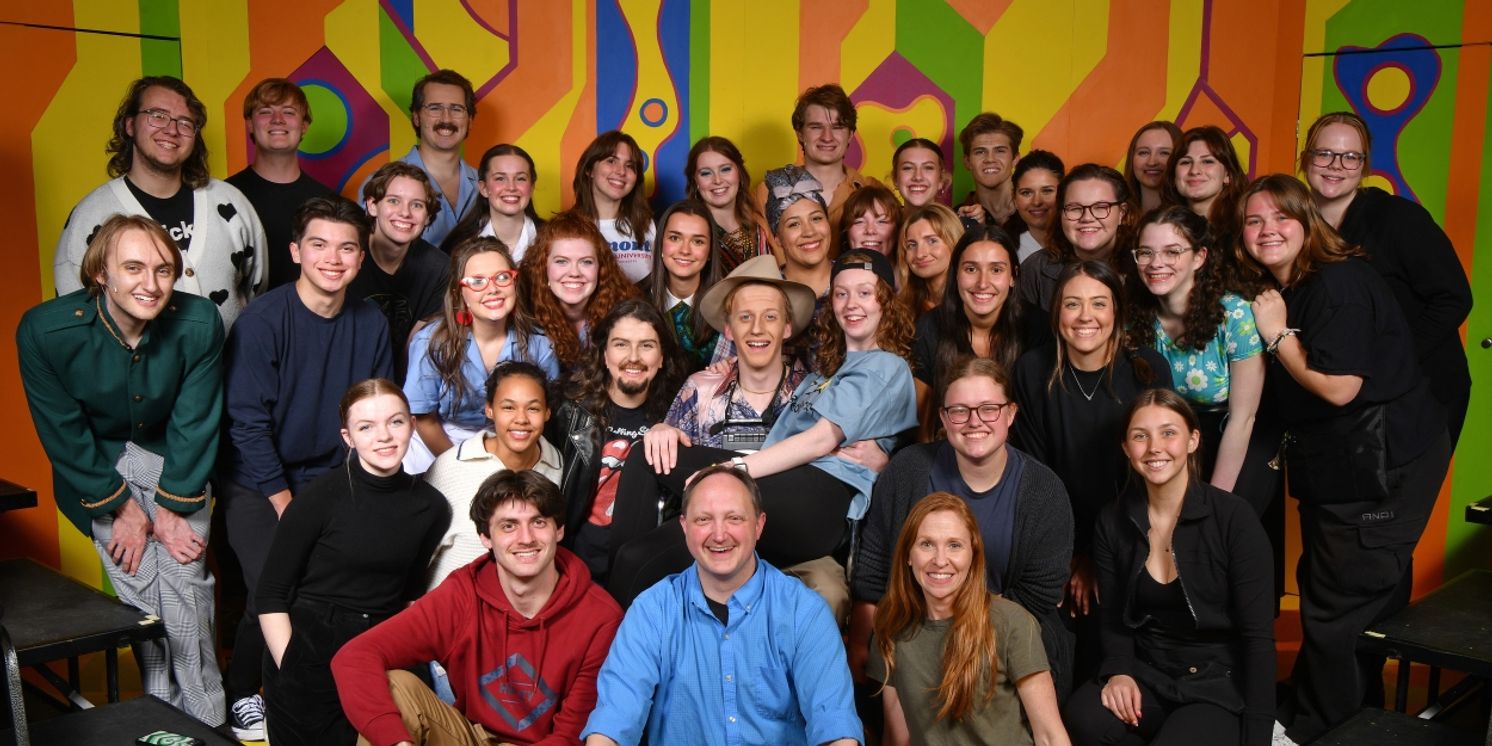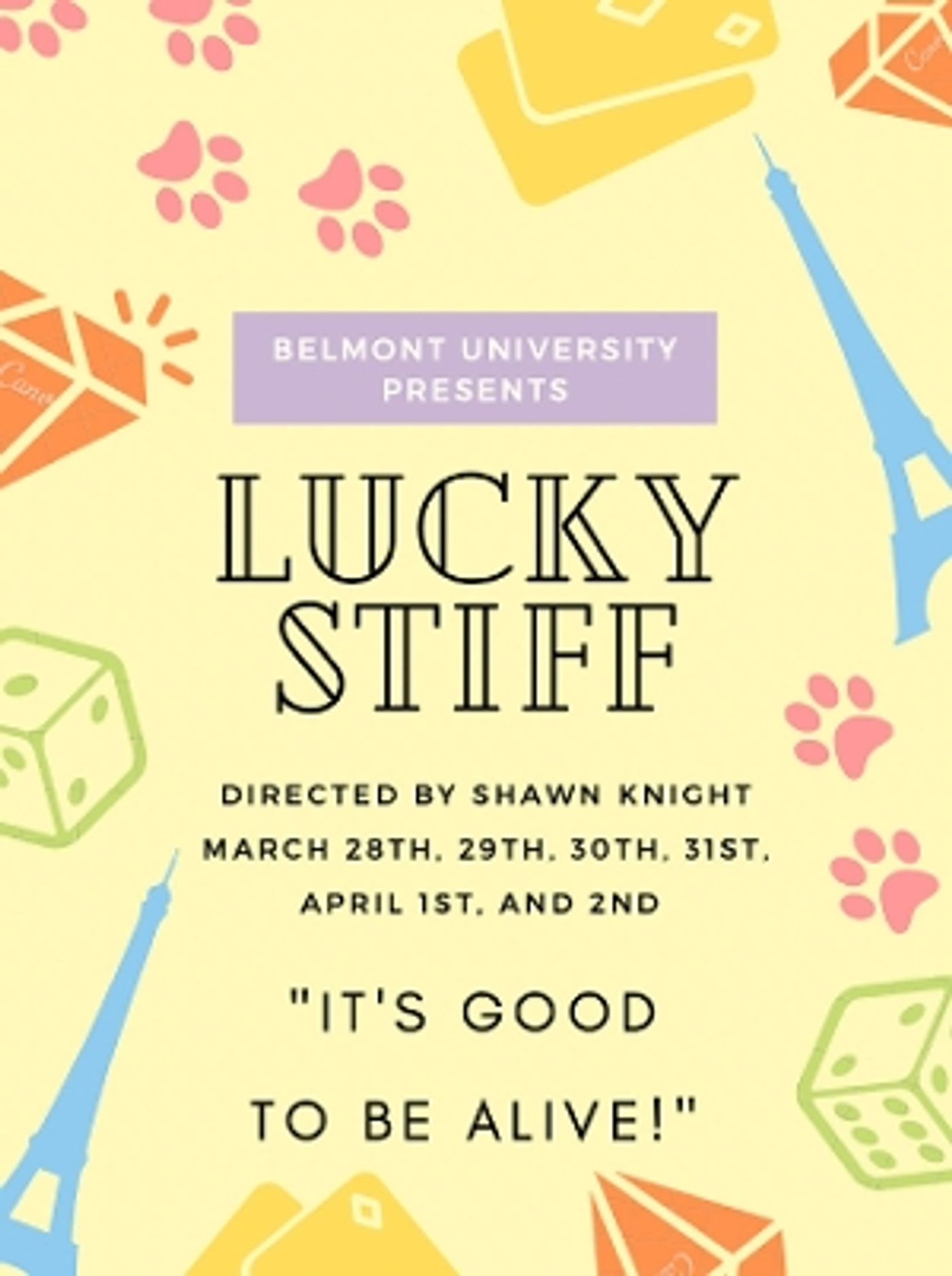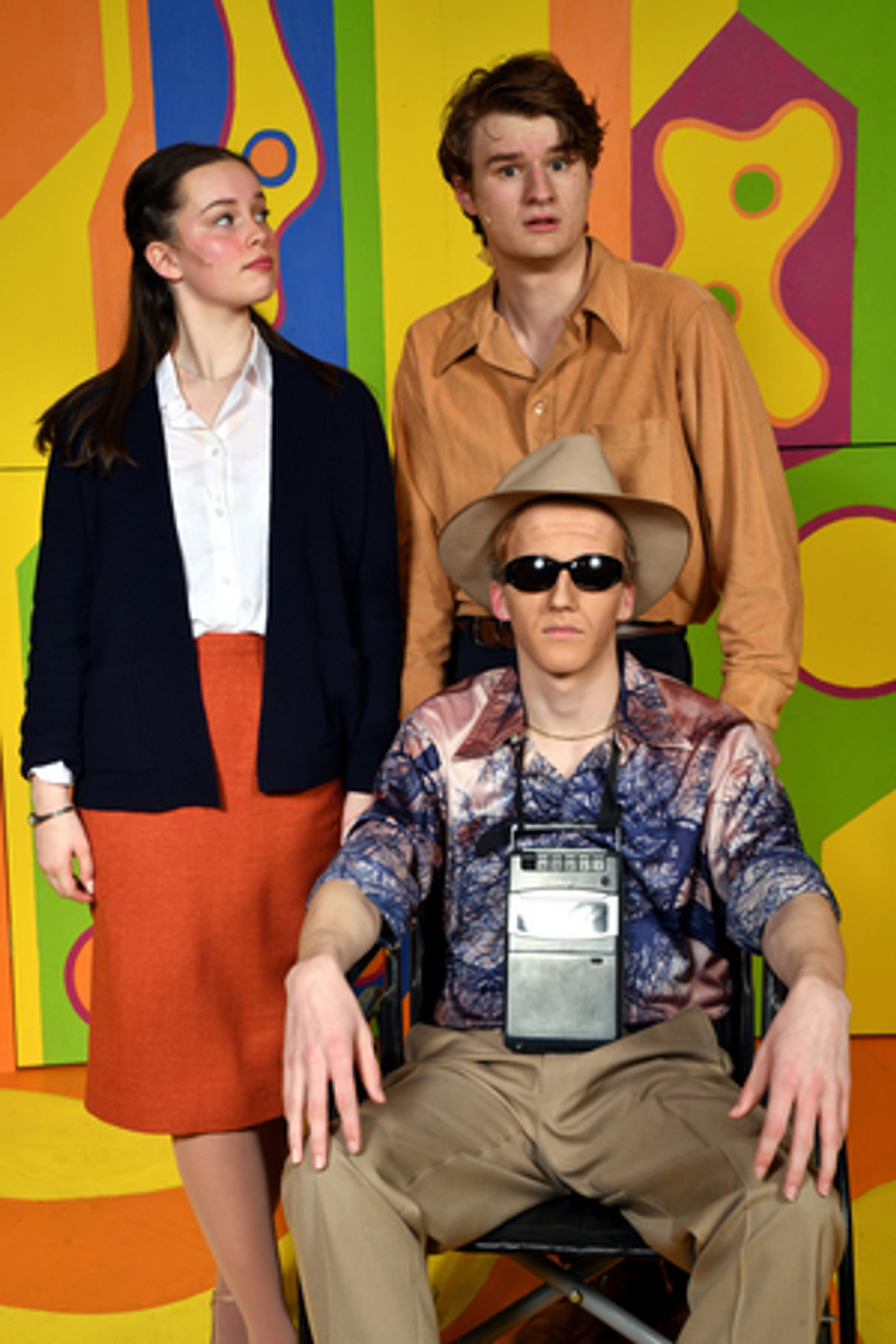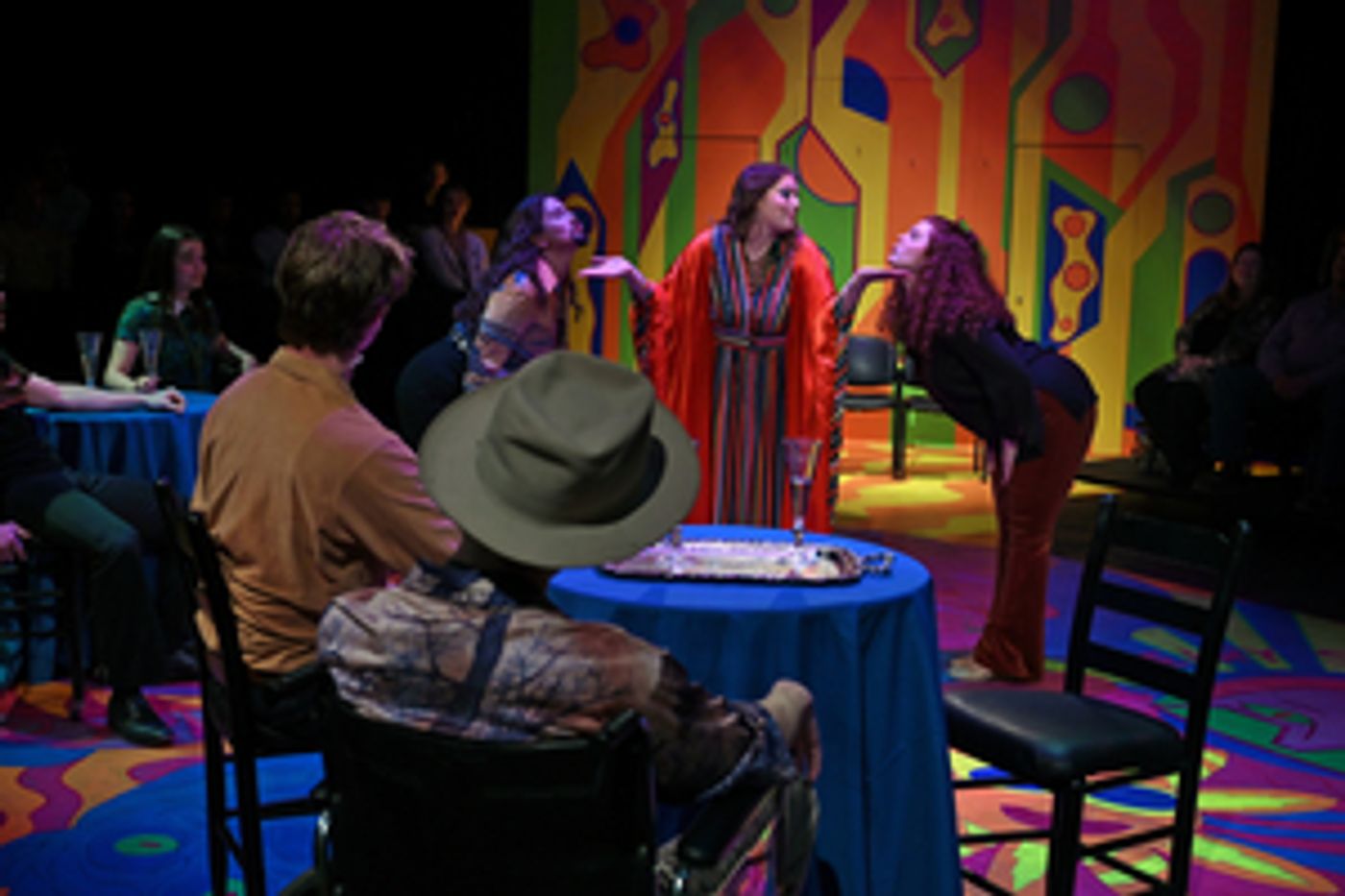Student Blog: It's Good To Be Alive!
My Time as the Assistant Director of Lucky Stiff


Every semester in Belmont's theatre department brings new opportunities in the form of Performance and Production Lab, a class that every theatre major is required to take until they graduate. Students are assigned lab positions which can range from acting in that season's shows, working in the scene or costume shop, being assigned a run crew position, or even designing elements of a show.
Last semester as part of Lab, I was the assistant stage manager (as well as the assistant script coordinator) for Ibsen's A Doll's House. But this semester, I took on an even bigger challenge: the task of assistant directing Ahrens and Flaherty's Lucky Stiff.
Assistant directing can look very different depending on the show and its director, so I thought this would be the perfect place to share my experiences as an AD.
Pre-Production
Something that was very new to me about this process was being asked to be in the audition room. Of course we've all been in an audition room before, but this time I was sitting on the other side of the table with Shawn Knight, our director, and Mitch Beard, Belmont alumnus and music director.
While watching all of my peers audition, I was tasked with creating a list of actors I wanted to see in callbacks, specifically for lead roles, as well as people we wanted to see more from. It became very quickly became apparent between Shawn, Mitch, and myself that our callback lists were going to be very long.

Ella Batogowski as Annabel,
and Jack Johnson as Uncle Tony
Photo by Rick Malkin
Belmont holds general auditions for everything happening in each season, and our other spring show was Shakespeare's Loves Labours Lost, a collaboration with Nashville Shakespeare Festival. While a lot of the Shakespeare monologues we observed at auditions were very good, they weren't exactly what we were looking for in the way of musical farce, which meant asking many actors to join us for callbacks.
The callback process was a pretty standard one. We offered a dance section (the opening verse of "Speaking French"), a music section which harmonies, and a cold reads section. At the end of the night, we made a list of our top choices and submitted them, and by the end of the week, the cast list was posted and the team was ready to move into the phase of our production.
Production Meetings
As the assistant director, I was asked to attend production meetings for the show, held every Friday morning at 10 AM following the release of the cast list. The first thing I did before our first production meeting was sit down and read the script. Prior to auditions, I had only read a brief synopsis of the show, as well as listened to the soundtrack so I had some idea of what we were looking for in the casting process. Now I needed to read and listen to everything (even watching snippets of various productions) so I could be well informed and opinioned in these meetings.
These meetings were Shawn's chance to talk to the designers about his vision for the show, as well as let them showcase their early ideas for the production. We established early on that we wanted to set the show in the 70s because it worked the best given certain elements of the show (telephone booths, cassette tapes, trains, and even Monte Carlo) but also because of Shawn's association of quick humor to the late 60s sketch comedy show Laugh-In, which became a huge inspiration for how our set designer (and professor) Paul Gatrell built the world of Lucky Stiff. The rest of the production was designed by students with Jules Robinson as Costume Designer, Jeremy Moeller as Makeup Designer, Caroline Million as Lighting Designer, and Nora Weir as Sound Designer.
My main goal for attending these meetings was understanding Shawn's vision for the show. How would a show of this size work as a performance in the round? How could we best use our space in the black box? How would having 13 doors and 7 opening windows affect the action in the space? Understanding all of these things was super important to all of us so we could give our actors exactly what they needed to move forward in telling this story.
The Rehearsal Process
The whole show from start to finish, took about two months. We began rehearsals in early February, and as Shawn's AD, I was still unsure of where exactly I would fit into this production. Shawn asked me very early on if I felt comfortable blocking something on my own, or if it would be better for m to just sit back and observe. I felt pretty confident in my ability to tackle a small piece of this show (I originally suggested blocking "It's Good To Be Alive") but we were going to tackle that in the first week of blocking and as a student I had been way to busy to begin thinking about the show from that angle.

Photo by Rick Malkin
Sometime before Spring Break, I began joking with Shawn and Maggie (our Stage Manager) that I would love to block "Him, Them, It, Her", which anyone could argue is the most complicated number in the show. But as we talked about it more, I realized that I had ideas for the number and felt it was definitely something I could tackle, with Shawn's help of course. I also fought to keep a 2 and a 1/2 minute dance break in the song because I had an idea for a comical Drunken Maid dance solo involving the wheelchair.
I blocked the entire number in three hours, in our last rehearsal before we left for Spring Break. It involved 10 characters, and with the added dance break had become 5 minutes long. My biggest struggle with blocking this number became the set, which was a struggle completely out of my control. We knew the location of the walls and doorways, but until we had the physical walls and doors and backstage areas, it would be difficult to gage if the way I had blocked the number (a Scooby Doo chase scene with actors appearing halfway around the space seconds after they had exited) was doable.
The collaborative aspects of this number were a wonderful surprise, and definitely a welcome one. Laura Walker, our Maid, was an incredible dancer and choreographed her own solo in the number. Deven Ferrer, our Dominique, was also a very talented dancer who helped me finesse some of the more technical dance moments in the number (including a wonderful tango section with Vinnie) that allowed the number to feel more like the organized chaos we wanted.
In the end, I couldn't have been more proud that I was able to give the show my own personal touch, and honored that Shawn trusted me with such a huge part of the show.

"Speaking French"
Photo by Rick Malkin
The Tech Process and The Show
And after a long rehearsal process, my job as the AD slowed to a halt during Tech Week. While I was still taking notes (specifically pertaining to my number), there wasn't much else I could do. Shawn and I sat back and watched as the actors and crew members brought the show to life, and we prepared for the week of performances ahead, all of which went wonderfully. I could not have been more proud of our cast.
Being the AD for a show like Lucky Stiff was a life changing experience and I could not be more grateful for every single person who worked on this show with me. I learned so much about myself as a person, as an artist, and as a director, and I'm so excited to take what I've learned and continue to grow on this journey.
Ahrens and Flaherty put it best: "It's good to be alive!"
Videos


